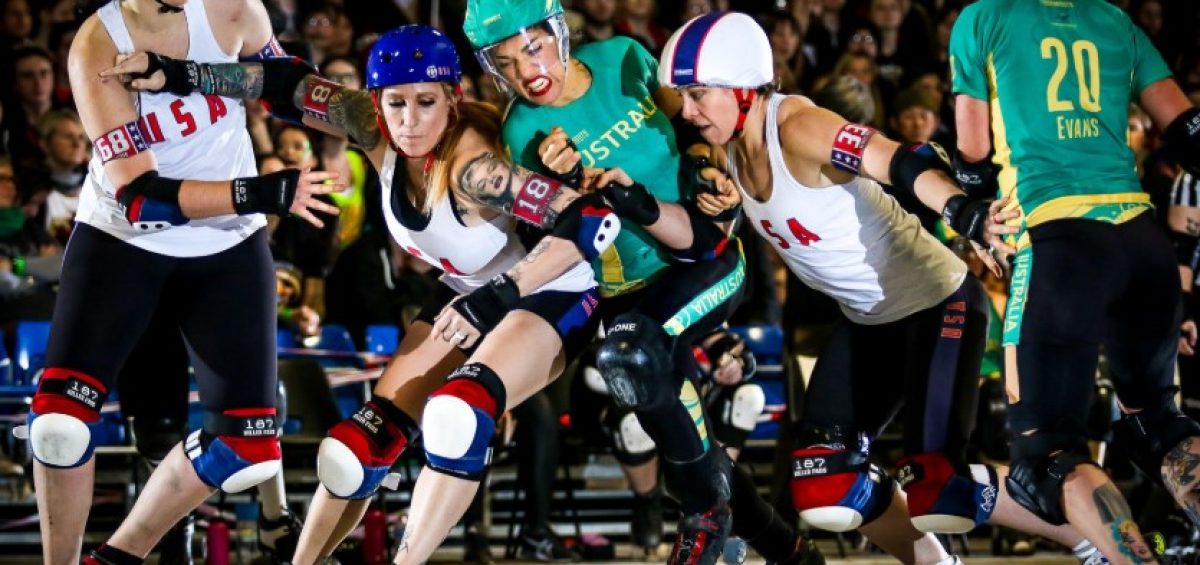
The contact sport of Roller Derby is played between two teams that consist of five members each who roller skate ante-clockwise around a roller rink. Roller derby has a sizeable international following with approximately 1,250 amateur leagues across various countries, although most of them are within the United States.
The game generally consists of jams that sees each team designate a jammer, identified by wearing a state on their helmet, score points by lapping members of the opposing team. The teams each attempt to hinder the progress of the jammer on the opposite team, while attempting to help their own jammer go around the rink unhindered. This means that, in effect, players are playing both offense and defence simultaneously.
The origins of roller derby can be traced back to the bank-tracked roller skating marathons of the 1930s, with Damon Runyon an d Leo Seltzer claiming credit for creating the competitive version of the sport. Professional roller derby quickly became a niche sport, gaining a sizeable following, yet remaining largely unknown to most sports fans.
d Leo Seltzer claiming credit for creating the competitive version of the sport. Professional roller derby quickly became a niche sport, gaining a sizeable following, yet remaining largely unknown to most sports fans.
In 1940, over 5 million spectators watched roller derby events that took place in around 50 American cities, which for a long time was the peak viewership of the sport. In the following decades roller derby became a form of sports entertainment, where the athleticism was overshadowed by theatrical elements, such as the skaters wearing eye-catching costumes instead of plain uniforms. Whilst this may have had the effect of bring in new viewership, fans of the more traditional version of the sport were left slightly disappointed by the new form the sport had decided to take.
There are many fans of roller derby within the LGBTQ community and the sport has been praised for its level of inclusiveness.

